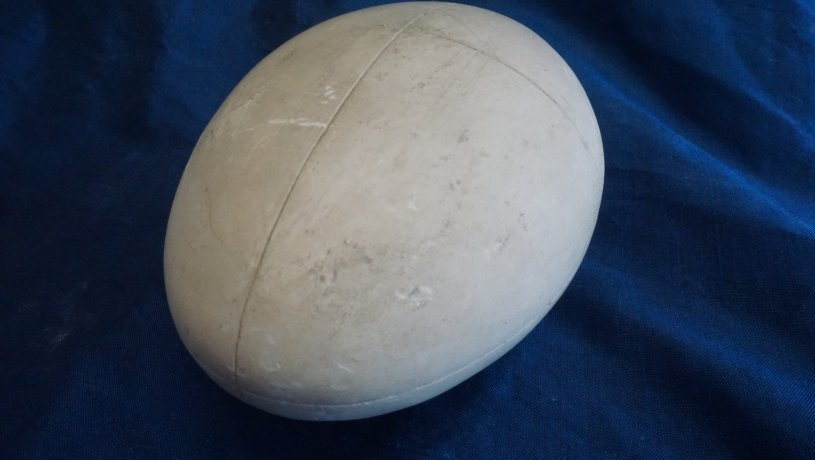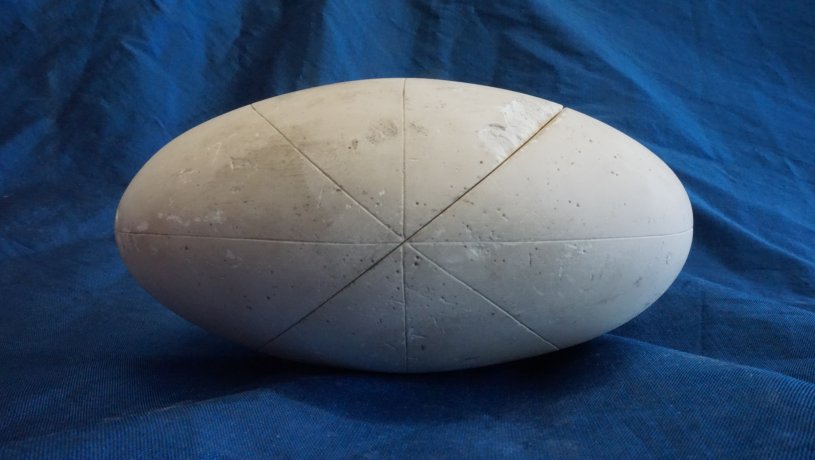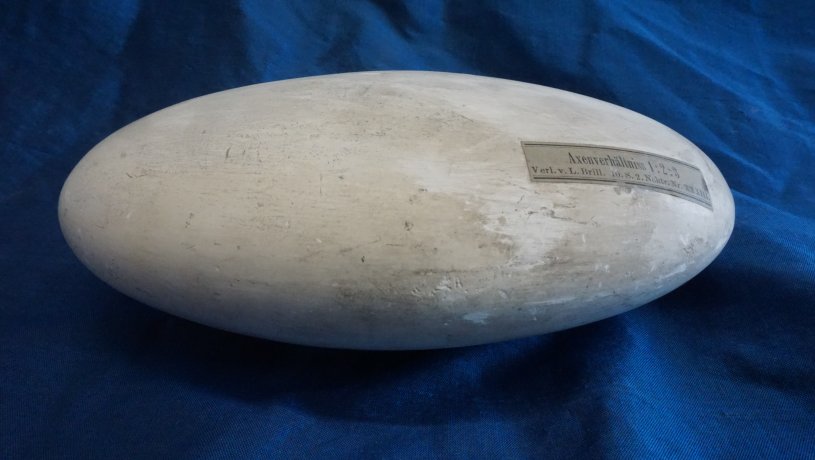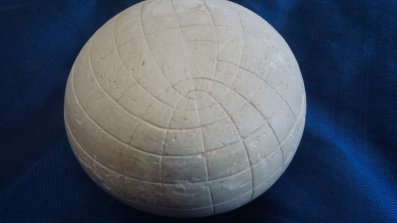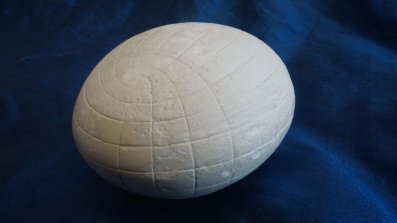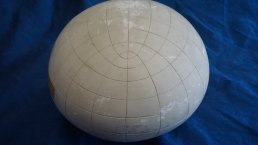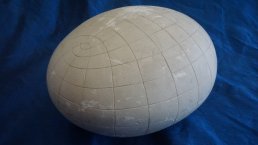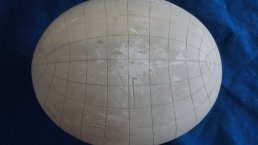Ellipsoids
Models III 1, X 3, X 13
These three ellipsoids are reasonably simple, with some exhibiting geodesics. Geodesics are quite well-behaved on ellipsoids: for any geodesic on an ellipsoid, there are two lines of curvature such that the entire geodesic lies between them. The geodesics on ellipsoids have interesting 'length' properties, in the sense of being infinitely long or "closed" (finitely long). On a sphere, all geodesics are "great circles", and are closed. On a spheroid (a non-spherical ellipsoid with $a=b$), the only closed geodesics are meridians and the equator. On a tri-axial ellipsoid (where $a$, $b$, $c$ are all distinct), all but the three axial geodesics are infinitely long - these can be seen on model III 1 below. The erratic, ever-winding nature of infinitely long geodesics can be seen on model X 12a.
Model III 1
Model X 3
Model X 13
Umbilic Points and Lines of Curvature
Models III 2 and 4 display lines of curvature on ellipsoids. There are 4 umbilic points on "tri-axial" ellipsoids (where $a$, $b$, $c$ are all distinct). While they are not marked explicitly on models III 2 and III 4, it can be seen from the lines of curvature roughly where they ought to be, following the ideas in Principal Curvature, Umbilic Points, and Lines of Curvature.
Note that lines of curvature are always closed on ellipsoids. (This is not true in general for quadrics, but any quadric must have some closed lines of curvature.) Many properties are shared between different quadric surfaces, which is linked to the fact that they form families of "confocal quadrics". Lines of curvature are particularly interesting, as they can define local coordinates to parameterise a surface (at non umbilic points).
Model III 2
Model III 4


